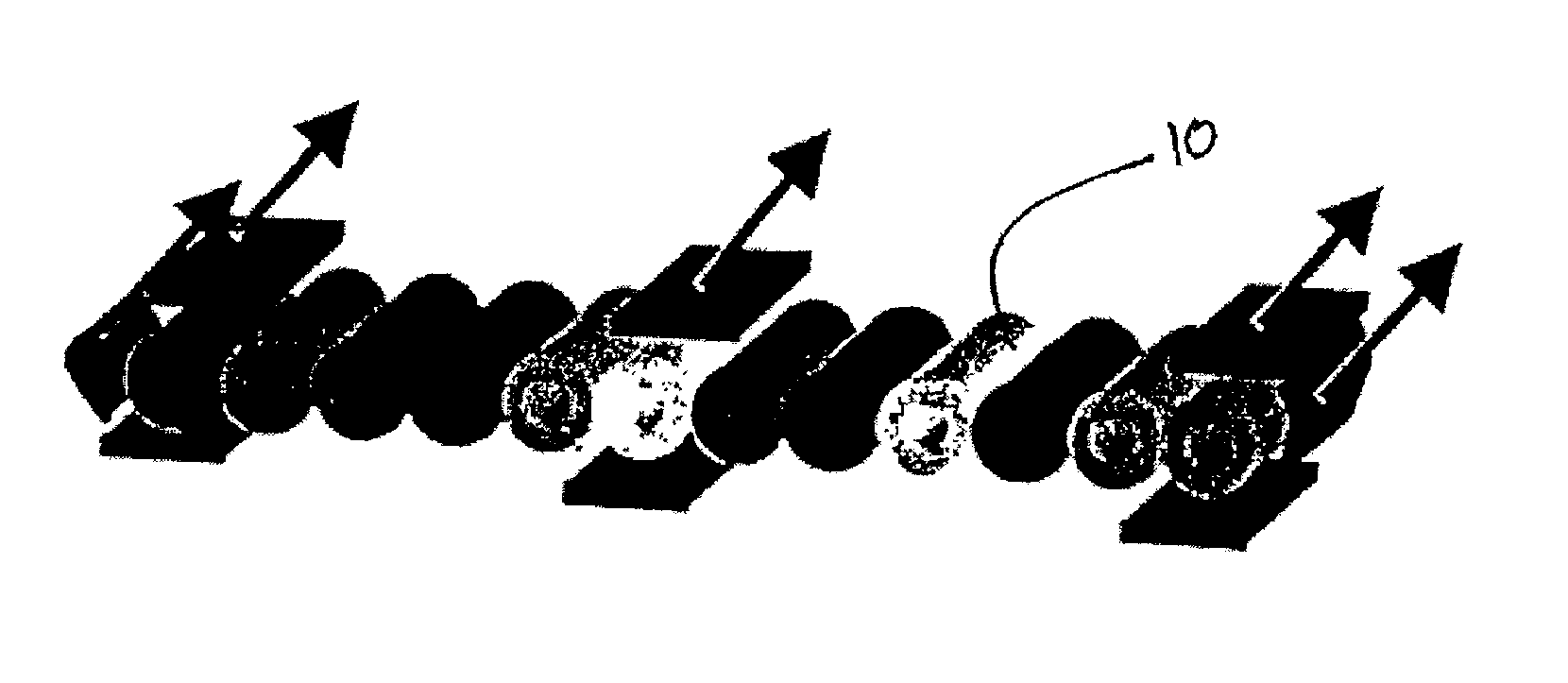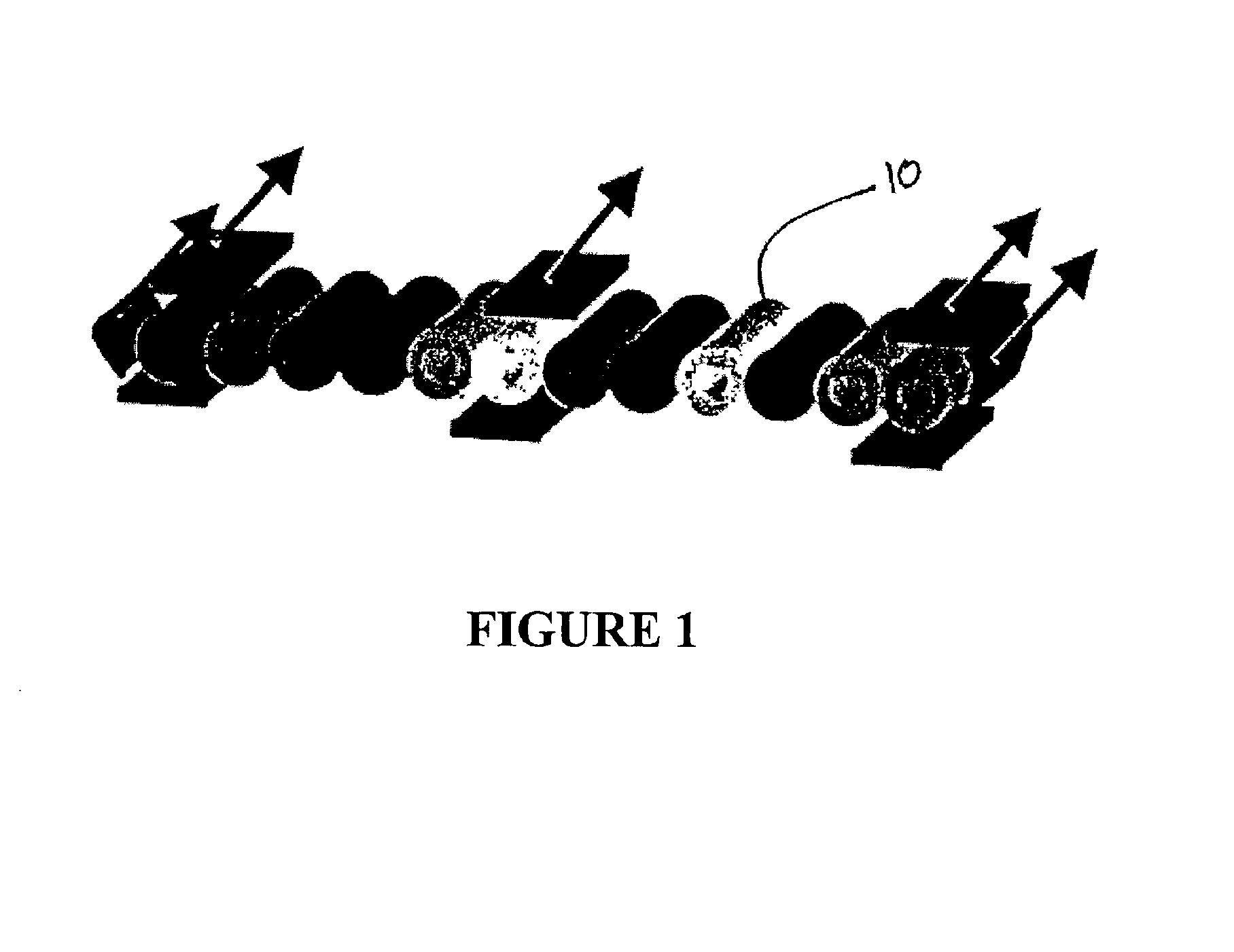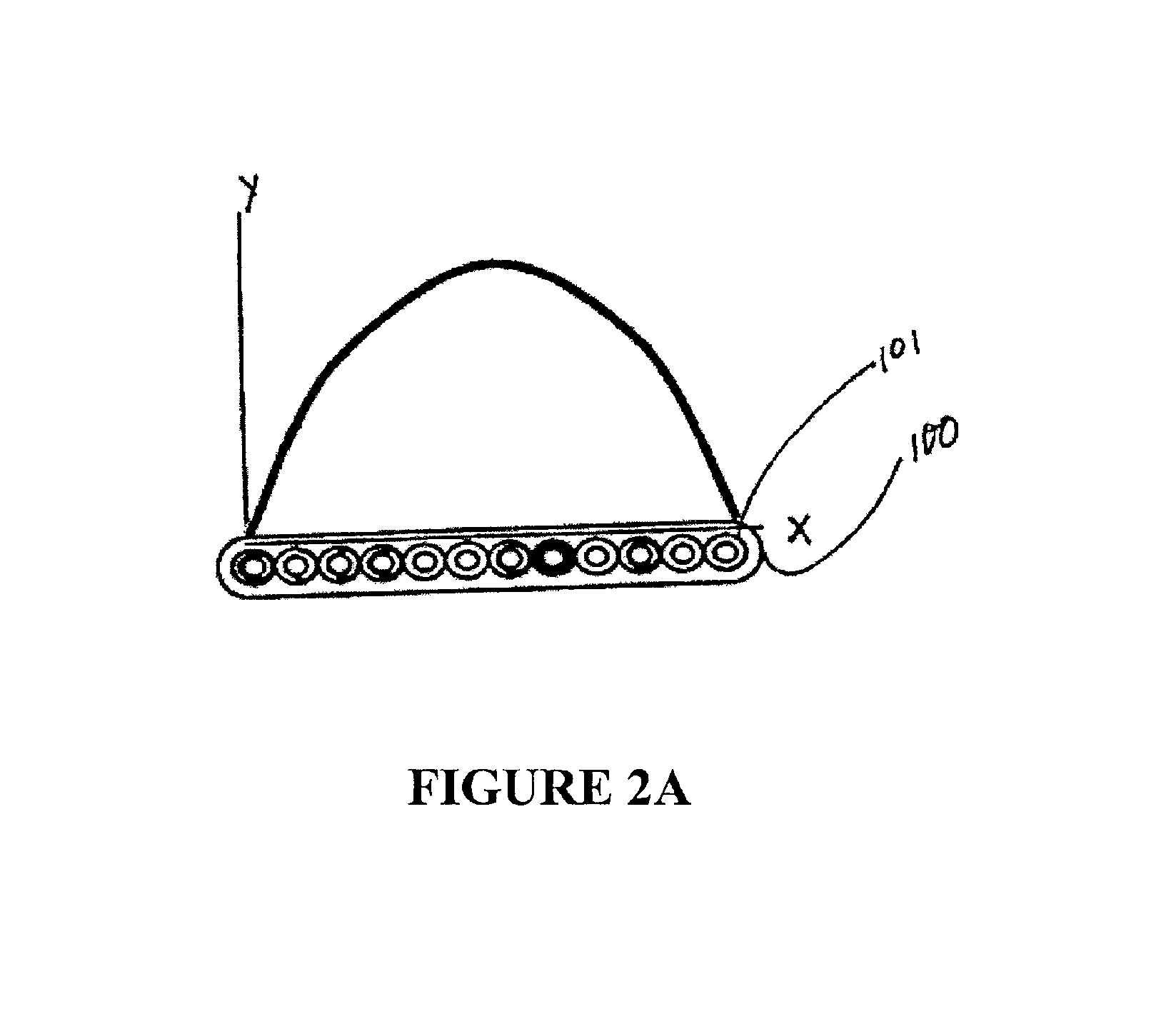Functionally strained optical fibers
a technology of functional tension and optical fibers, applied in the field of optical fibers, can solve the problems of increasing the difficulty of tasks using the traditional constant tension per fiber approach, and achieve the effects of reducing attenuation, reducing impact, and optimizing strain distribution
- Summary
- Abstract
- Description
- Claims
- Application Information
AI Technical Summary
Benefits of technology
Problems solved by technology
Method used
Image
Examples
first embodiment
[0027]Turning now to FIGS. 2A through 2E, in the invention various tension functions for fiber stress during ribbon manufacture are shown. In FIG. 2A, a typical fiber optic ribbon 100 is shown along the X-axis of a graph, having a plurality (twelve) optical fibers 101. The Y-axis of the graph represents the tensile force applied to the individual optical fibers along the width of the fiber during manufacture. In this Figure, a symmetric parabolic or sinusoidal curve is shown where the tensile load on the end fibers is less than that on the center most fibers, while the fibers are being drawn. In the preferred embodiment of the present invention, the exact tensile load values and the function of the distribution over the fibers should be such as to result in a flat or otherwise geometrically stable ribbon after manufacture. Therefore, the exact loads and distribution to be used is to be tailored to the particular manufacturing process being used, because no one load distribution woul...
second embodiment
[0040]As shown in FIG. 4, the optical fiber ribbon 100 is made up of three sub-unit ribbons 20, 22, 24. Each sub-unit ribbon 20, 22, 24 is made up of a plurality of optical fibers 10. The optical fiber ribbons 10 of each sub-unit ribbon 20, 22, 24 are then each encased in a matrix material 30, such as a coating resin. The use of multiple sub-units ribbons 20, 22, 24 each encased in separate matrices allows the optical fiber ribbon 100 to be split into the individual sub-unit ribbons 20, 22, 24, if necessary.
[0041]Next, each of the sub-unit ribbons 20, 22, 24 is pre-stretched by a tension load that is constant for the entire the sub-unit 10, 12, 14. These sub-unit ribbons 10, 12, 14 are then encased in a common matrix material 32 to form the final optical fiber ribbon 100.
[0042]As shown in FIG. 5A, in a first configuration, the individual sub-unit ribbons 20, 22, 24 are provided with symmetrical tension loads before they are encased to form the optical fiber ribbon 100. A first tensi...
PUM
 Login to View More
Login to View More Abstract
Description
Claims
Application Information
 Login to View More
Login to View More - R&D
- Intellectual Property
- Life Sciences
- Materials
- Tech Scout
- Unparalleled Data Quality
- Higher Quality Content
- 60% Fewer Hallucinations
Browse by: Latest US Patents, China's latest patents, Technical Efficacy Thesaurus, Application Domain, Technology Topic, Popular Technical Reports.
© 2025 PatSnap. All rights reserved.Legal|Privacy policy|Modern Slavery Act Transparency Statement|Sitemap|About US| Contact US: help@patsnap.com



